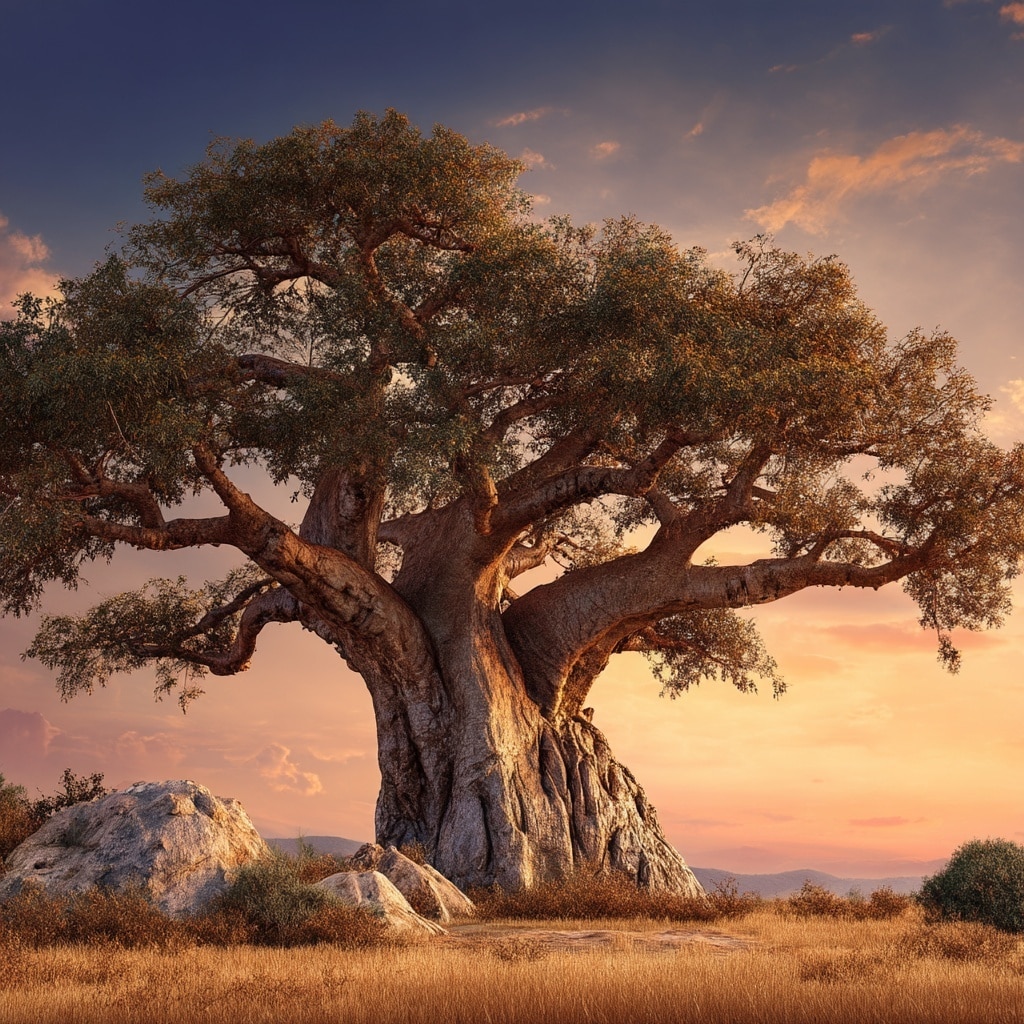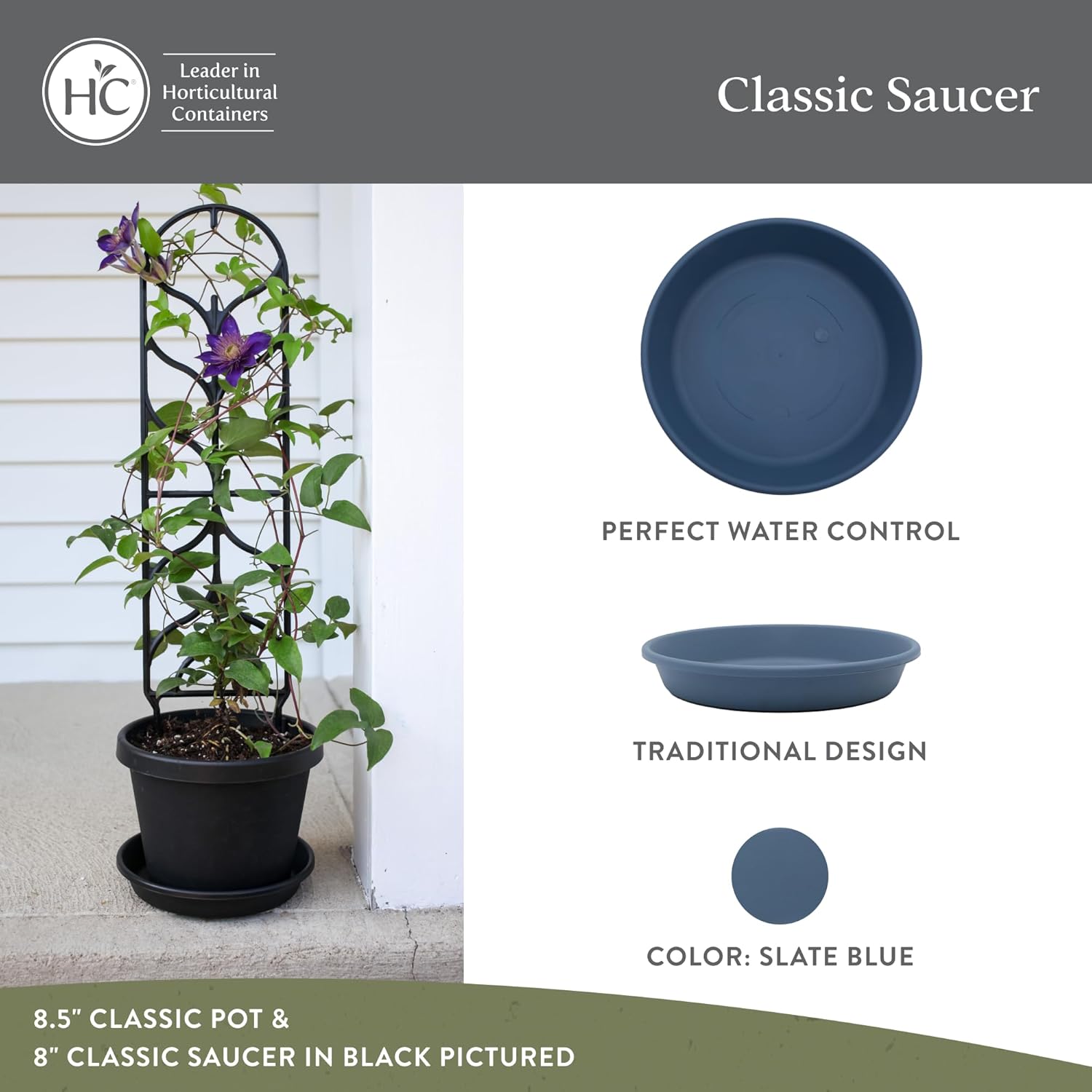Tree lovers, rejoice — there’s something extraordinary waiting for your garden or landscape. When you plant a tree, you’re not just adding greenery — you’re inviting a living monument of nature, one that can surprise you with shape, texture, colour or story. In this article we’ll highlight six stunning and unique types of tree you might not have considered, each bringing its own character and charm to your outdoor space. Whether you’re looking for a bold statement or a gentle accent, these tree choices offer something special.
Table of Contents
Baobab Tree – The Tree of Life
The Baobab tree is often called the “Tree of Life” — and for good reason. Native to Africa, this ancient tree can live for over a thousand years, storing massive amounts of water in its thick trunk to survive harsh droughts. Its wide, bottle-like shape makes it one of the most recognizable tree species on Earth.
Baobab trees aren’t just visually stunning; they’re also incredibly useful. Every part of the tree serves a purpose. The fruit, rich in vitamin C and antioxidants, is used for food and natural remedies. The bark can be turned into rope or fabric, and the leaves are often cooked as a nutritious green.
If you’re passionate about sustainability, the Baobab tree symbolizes endurance, resilience, and the deep connection between life and the natural world — a perfect choice to feature in an eco-focused garden or educational landscape project.
Dragon Blood Tree – The Island Gem of Socotra
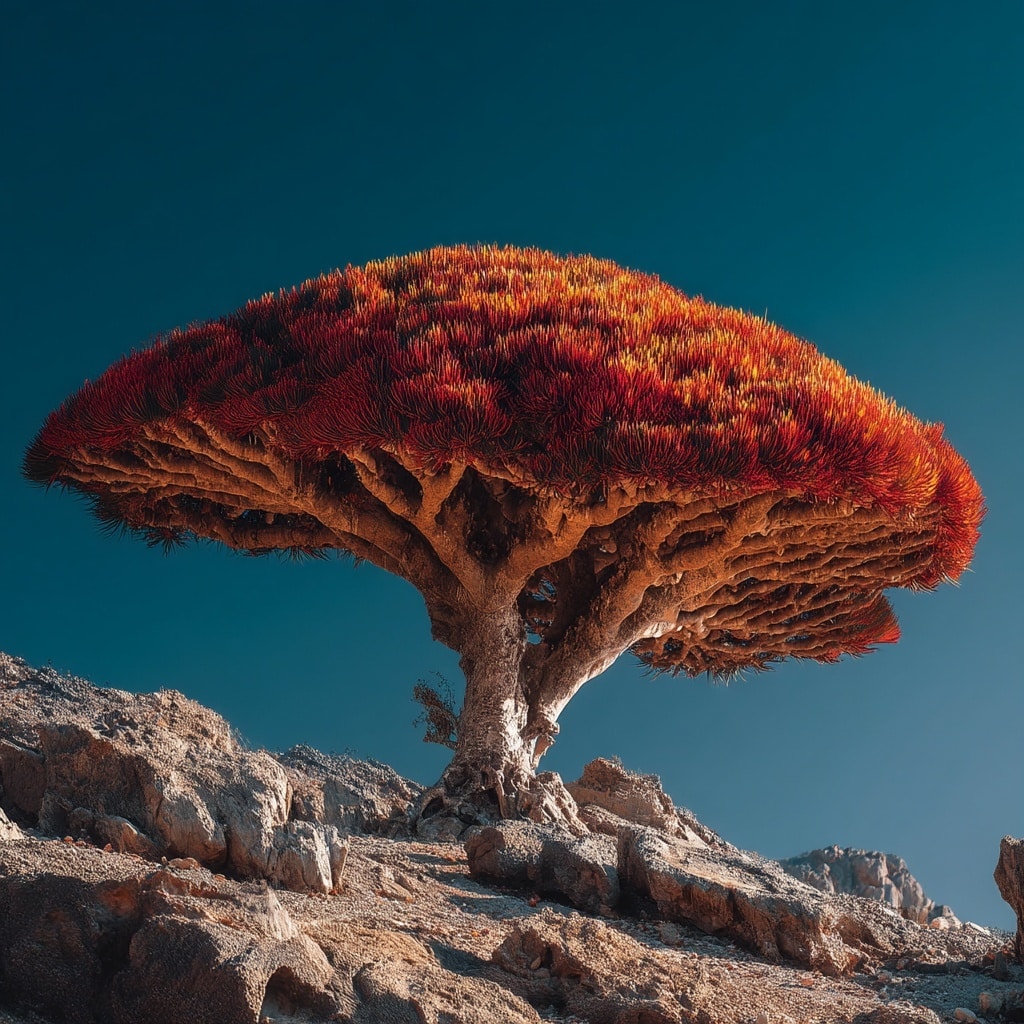
The Dragon Blood tree is one of the most striking trees on the planet, known for its umbrella-shaped canopy and deep red sap — often referred to as “dragon’s blood.” Native to the remote island of Socotra in Yemen, this tree stands as a living symbol of mystery and resilience.
The name comes from its crimson resin, which has been prized for centuries in medicine, dyes, and incense. When cut, the Dragon Blood tree “bleeds” a red liquid that was once believed to have magical healing powers. Beyond its beauty, the tree’s unique shape helps it collect moisture from the air — a natural adaptation to its dry, rocky habitat.
For garden enthusiasts or landscape designers, incorporating inspiration from the Dragon Blood tree means bringing in an exotic and dramatic element that sparks curiosity and wonder. It’s the kind of tree that turns any space into a conversation piece.
Rainbow Eucalyptus Tree – Nature’s Living Canvas
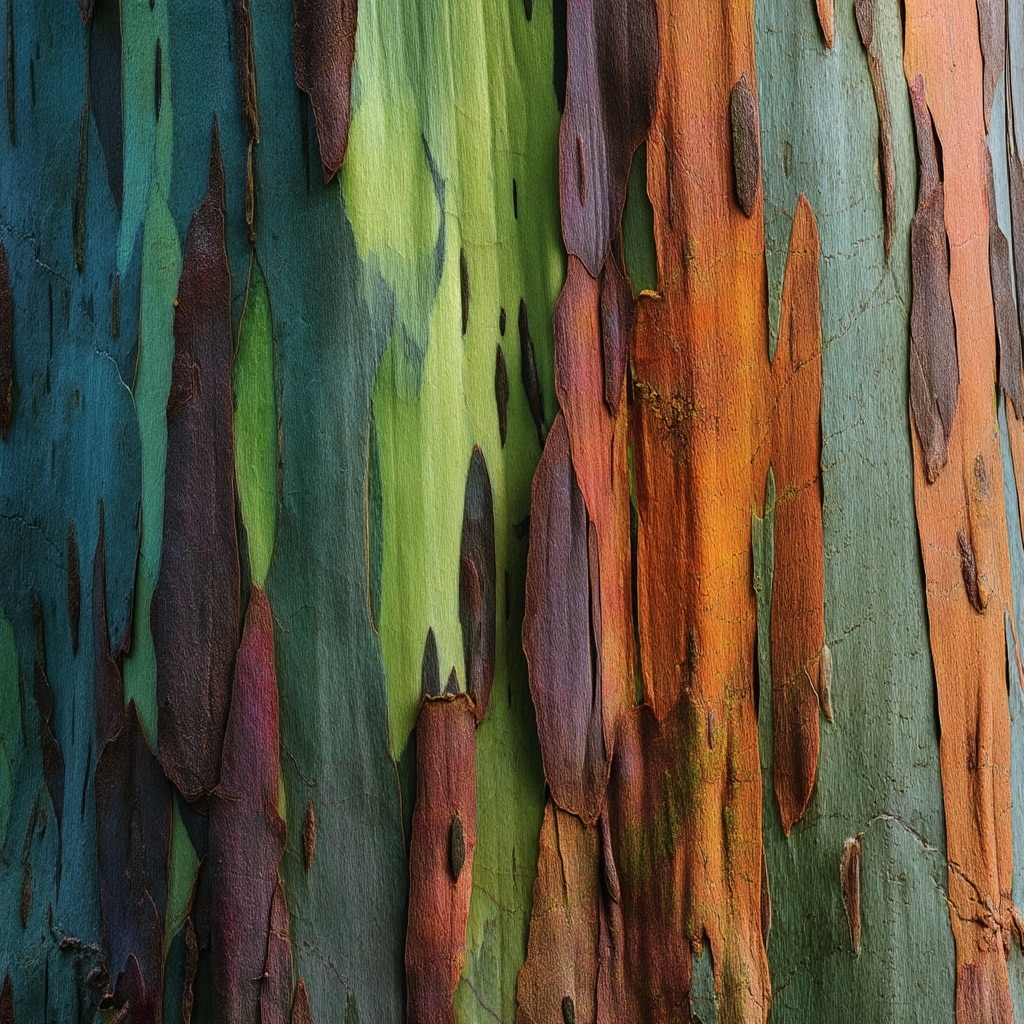
The Rainbow Eucalyptus tree is a true masterpiece of nature. Native to the Philippines and Indonesia, this tree is admired for its vividly multicolored bark that peels away to reveal bright shades of green, orange, purple, and blue. It’s like a living painting that changes hues with the seasons.
This tree grows best in tropical and subtropical climates, thriving in moist, well-drained soil. As it matures, the outer bark sheds in strips, creating streaks of color that make it one of the most visually stunning tree species in the world. It’s often planted as an ornamental tree in parks and large gardens because of its striking appearance and fast growth.
For those who appreciate natural art, the Rainbow Eucalyptus tree brings life and color to any landscape. Its beauty reminds us that trees aren’t just providers of shade and oxygen—they’re works of art sculpted by nature itself.
Bael Tree – The Sacred Fruit Tree
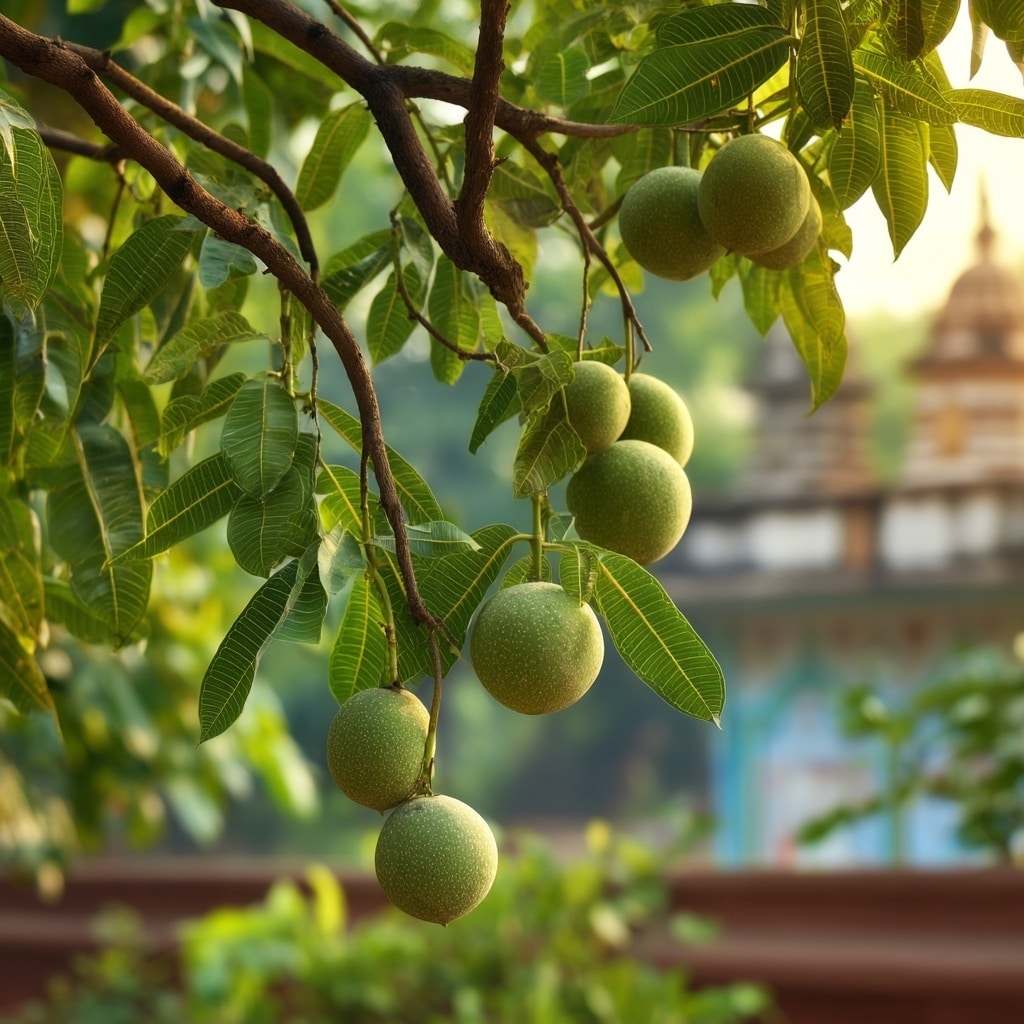
The Bael tree holds a special place in both culture and nature. Native to India and Southeast Asia, this tree is revered for its fragrant blossoms and medicinal fruit. Known as the “Wood Apple,” the Bael tree has been used for centuries in traditional healing practices and spiritual rituals.
Its hard, round fruit contains a sweet, aromatic pulp that’s often made into refreshing drinks and herbal tonics. Beyond its health benefits, the Bael tree is also symbolic of purity and protection, frequently planted near temples and homes to bring positive energy and shade.
With its ability to thrive in dry, hot conditions, the Bael tree is perfect for eco-conscious gardeners seeking a hardy, low-maintenance addition that carries deep meaning. It’s not just a tree — it’s a living emblem of health, spirituality, and endurance.
Silk Floss Tree – The Spiky Beauty

The Silk Floss tree is a true showstopper. Native to South America, this tropical wonder is known for its thick, thorn-covered trunk and stunning pink, white, or purple blooms that light up the landscape in late summer and fall. Despite its fierce exterior, this tree produces some of the softest fibers in nature—its seed pods are filled with silky floss, once used to stuff pillows and mattresses.
What makes the Silk Floss tree so unique is the contrast it presents: rough and spiky on the outside, yet delicate and elegant in bloom. Its broad canopy provides shade, while its flowers attract bees and butterflies, making it a favorite for pollinator-friendly gardens.
For those looking to add drama and exotic charm to their outdoor space, the Silk Floss tree is an ideal choice. It’s a bold reminder that beauty often hides beneath a layer of toughness.
Socotra Cucumber Tree – The Desert Survivor
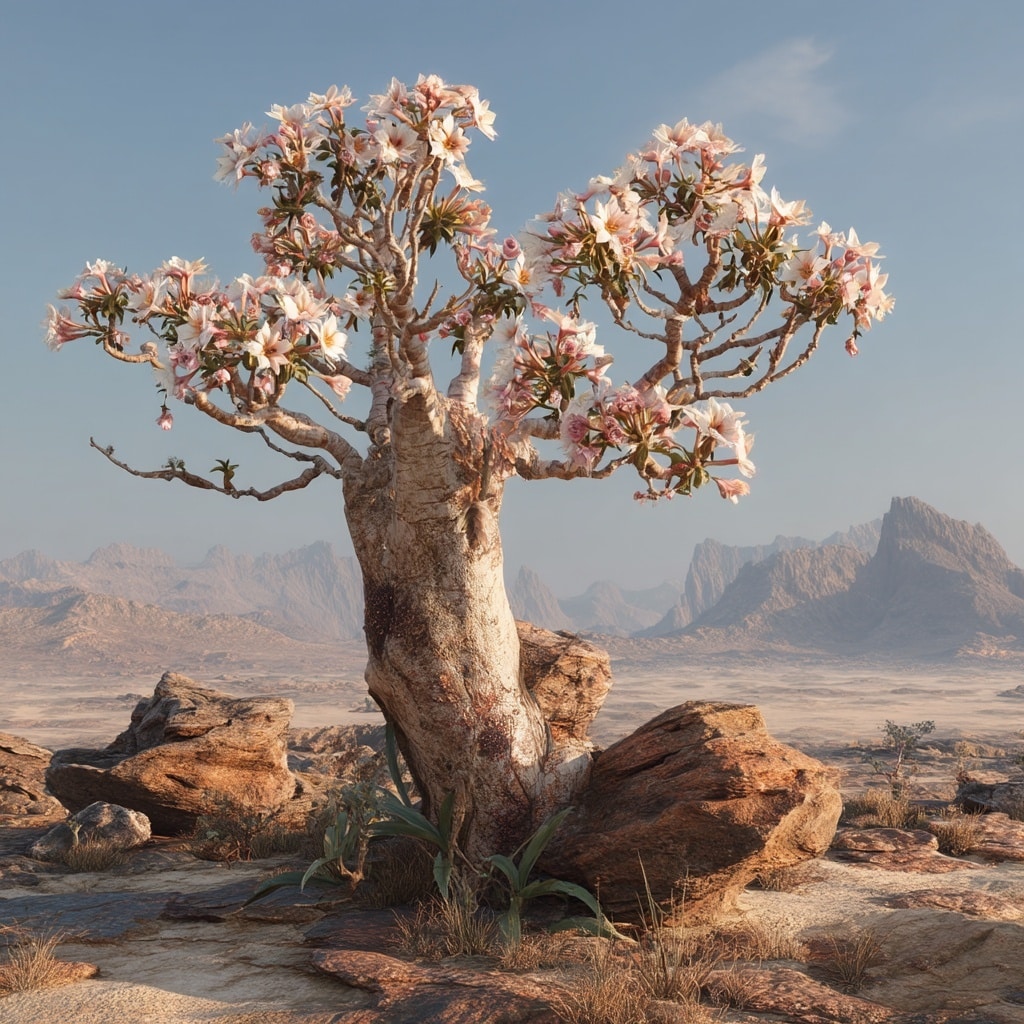
The Socotra Cucumber tree is one of the rarest and most unusual tree species in the world. Native only to the island of Socotra, this tree has a bulbous, water-storing trunk and sparse branches that resemble a bottle gourd. It’s perfectly adapted to one of the harshest, driest environments on Earth, where rainfall is scarce and the sun is relentless.
What makes the Socotra Cucumber tree truly fascinating is its resilience. It can store enough moisture in its swollen trunk to survive long droughts, much like a cactus. The small, pinkish-white flowers bloom against its gray-green skin, adding a delicate beauty to its rugged form.
This remarkable tree teaches an important lesson about survival and adaptation. It’s a reminder that life can thrive even in the most unforgiving conditions — a perfect symbol for gardeners who value strength and endurance in nature.
Conclusion
Each tree on this list proves that nature’s creativity knows no limits. From the color-streaked bark of the Rainbow Eucalyptus to the mystical red sap of the Dragon Blood tree, these unique species remind us how extraordinary and diverse trees can be. Whether you’re a passionate gardener, landscaper, or nature lover, adding even one of these trees to your outdoor space can transform it into something truly special.
Trees do more than decorate our world — they nurture it. They offer shade, shelter, and a living story that unfolds year after year. So, next time you plan your garden, consider choosing a tree that stands out — one that not only grows but inspires.



